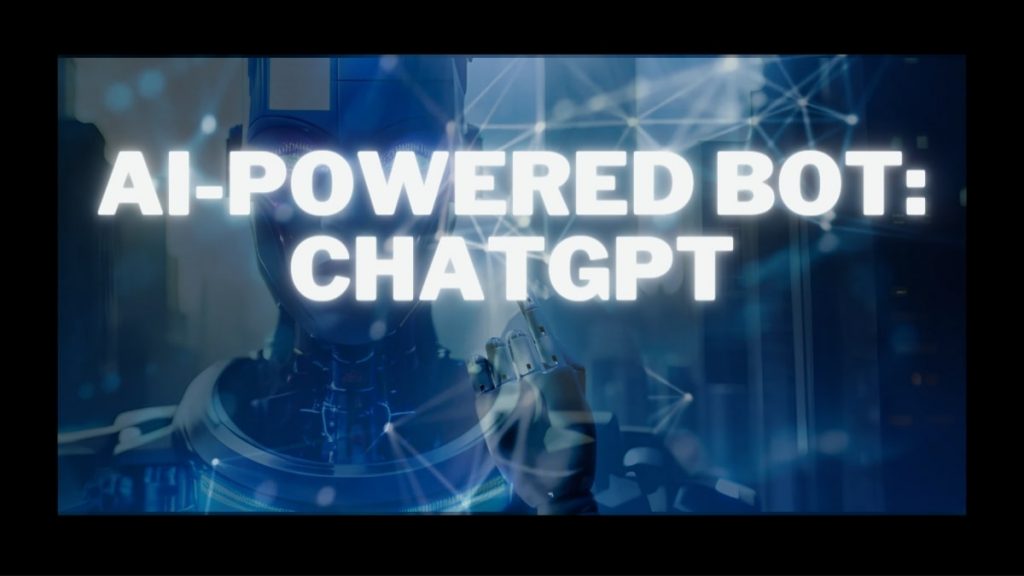OpenAI’s GPT (Generative Pre-training Transformer) is a language model that employs unsupervised learning to a huge text dataset in order to pre-train a transformer neural network. After the initial period of pre-training, the model is ready to be fine-tuned for specific natural language processing tasks including language translation, question answering, and text summarization.
Among the several GPT variants, GPT-2 is particularly well-known for its ability to generate natural-sounding text based on a massive dataset of over 40GB. GPT-3’s superiority stems from the fact that it was trained using more powerful hardware and a wider variety of data. When it comes to a wide variety of NLP tasks, GPT-3 is a top-tier model.
Table of Contents
ToggleHow Can You Use ChatGPT?

Depending on the goal or purpose, ChatGPT can be used in a number of different ways. Common uses of ChatGPT consist of:
Fine-tuning:
The pre-trained model can be fine-tuned by running it on a dataset that is relevant to your purpose. This is a popular application of ChatGPT. This enables you to make use of the model’s pre-training information and patterns while tailoring the model to your needs. For instance, a customer care chatbot can be developed by training the model on a collection of transcripts from calls into the service.
Accessing the pre-trained model through the API:
Through their application programming interface (API), OpenAI provides access to pre-trained versions of GPT models, including GPT-2 and GPT-3. The API provides access to the ready-to-use models so that they can be put to work generating text, answering questions, and otherwise assisting with NLP activities.
Training your own model:
Using the open-source code offered by OpenAI, you can train your own GPT model if you have access to a substantial volume of text data relevant to your use case. This can give you more control over the training process and enable you to build a model that is uniquely suited to your needs.
Combining with other technologies:
Additionally, ChatGPT can be used with other technologies to build more complex structures. It can be used in tandem with other technologies to build new ones, such as a text-to-speech system or a voice-controlled chatbot.
Research and education:
ChatGPT is an effective tool for researchers and teachers, who can use it to quickly synthesize research papers or create engaging discussion questions and responses for classroom use.
These are only a few of the many possible applications of ChatGPT; as the model is refined and expanded, its usefulness is sure to multiply. When applying the model, it’s crucial to think about its constraints and use case, as well as any ethical considerations that may arise.
ChatGPT Features
Language understanding:
Concerns have been raised about GPT’s potential for language understanding due of its capacity to generate writing that sounds human. Some scientists are looking into how to quantify GPT’s linguistic comprehension, while others are trying to enhance the tool’s current textual comprehension capabilities.
Ethical concerns:
Concerns have been raised concerning the ethical implications of GPT because to its potential for abuse in areas such as the creation of fake news or deepfake videos. Some have questioned whether it is moral to use GPT and other large language models for tasks like recruiting and teaching.
GPT-3 further trends;
The publication of GPT-3 has sparked a number of new lines of inquiry and conversations about the practical applications of GPT, such as the development of chatbots, the automation of writing tasks, and the enhancement of search engine results. The use of GPT-3 as a tool for teaching and research, as well as for the creation of interactive and creative content like poetry and storytelling, is another growing trend.
What are the Limitations of ChatGPT in details

In order to better understand and generate natural-sounding conversational discourse, ChatGPT is a specialised version of the GPT (Generative Pre-training Transformer) paradigm. ChatGPT has demonstrated impressive strength in a wide range of natural language processing and generating tasks, but it is not without its fair share of caveats.
Lack of commonsense reasoning:
One of ChatGPT’s major flaws is that it doesn’t have a foundational knowledge of commonsense thinking, which is the capacity to apply common sense information to a wide variety of issues and circumstances. Any time the model receives information that is out of its normal context, it runs the risk of making mistakes or responding illogically.
Limited understanding of context:
While the model has been improved to comprehend the discussion and generate responses based on that, it is still not perfect when it comes to understanding conversations with specific goals in mind, such as making recommendations or answering questions.
Limited understanding of goal-oriented conversation:
Like other machine learning models, ChatGPT can be influenced by biased views in the training data. As a result, the approach may produce false results or unfair treatment in specific contexts or when applied to specific populations.
Bias in the training data:
A complicated neural network model, ChatGPT’s inner workings are not readily apparent to outside observers. As a result, it’s hard to figure out why the model is making particular choices or where the mistakes are coming from.
Limited interpretability:
A complicated neural network model, ChatGPT’s inner workings are not readily apparent to outside observers. As a result, it’s hard to figure out why the model is making particular choices or where the mistakes are coming from.
High computational cost:
Training GPT models takes a large amount of time and data, hence their computational cost is high. In particular, GPT-3 requires a large amount of computing power and fast network connections to train and fine-tune a model of this complexity.
Data Privacy concerns:
Concerns concerning data privacy for individuals whose data may have been used to train GPT algorithms arise from the fact that these models require massive amounts of text data as input.
It’s important to keep in mind that many academics and developer groups are working hard to overcome these constraints and boost the efficacy and versatility of ChatGPT and related models.
Is ChatGPT Free To Use?
The GPT and other language models developed by OpenAI are available for anybody to use and modify due to their open-source licence.
However, an API key is required and consumption is metered if you want to utilise the pre-trained models offered by OpenAI, such as GPT-2 and GPT-3, or access the models via the OpenAI API. Fees apply if you want to use the pre-trained model via their API. Expenses will change with how it’s put to use. OpenAI provides a range of pricing tiers to accommodate a variety of use cases, with the possibility of a tailored plan for enterprise customers.
In addition, it’s important to remember that if you utilise GPT models in a commercial product or service, you may be responsible for ensuring that your use of the model complies with all applicable legal and regulatory standards, such as those pertaining to intellectual property and data protection.
The GPT code is available under an open-source licence, making it free to use. However, using the pre-trained models offered by OpenAI will cost you money.
Can it write software?
Because GPT and variants like ChatGPT are trained on a sizable corpus of text, they excel at natural language processing tasks like summarization, answering questions, and generating speech. However, the model wasn’t built to create computer code, thus it may have trouble with other jobs that need extensive reasoning or organisation.
Still, academics have used GPT-based models for code generation in a restricted setting. GPT-2 and GPT-3 models have been trained on certain programming languages and code snippets, allowing researchers to generate code snippets or rudimentary programmes in those languages. The resulting code, however, still necessitated extensive human editing before it could be used in a production environment.
While GPT-based models can create basic codes, they are not meant to replace human programmers, and the resulting code is not guaranteed to be suitable for use in production. As opposed to the challenge of creating code, GPT-based models excel at tasks involving the comprehension and creation of natural language.
Is ChatGPT better than Google search?
Both ChatGPT and Google search are potent applications, yet they serve distinct objectives and have unique advantages and disadvantages.
If you’re looking for something specific on the internet, Google Search is a great tool to use. In response to a user’s query, Google’s complex search algorithms get appropriate results from among the billions of indexed web pages. Relevance and ranking are also used to order the search results. Similar to other search engines, Google uses natural language processing to decipher user queries, but it excels where it matters most: quickly and accurately returning relevant results.
Contrarily, ChatGPT is a language model built for analysing and creating conversational text. It can comprehend the context of a conversation and come up with human-like responses because that’s its main objective. ChatGPT is flexible and can be customised for a variety of natural language processing applications because it is trained on a big dataset of text data. Like Google search, it can comprehend user input, but its primary strengths lie in natural language processing, text generation, and conversational continuity.
In spite of their similarities, Google search and ChatGPT serve very different functions. When it comes to discovering information rapidly online, Google search is the greatest option, while ChatGPT excels at tasks requiring natural language processing and production.
Google search is the better resource if you need to locate specific information or answers to a topic. But if you only want to talk to someone or make up some text, ChatGPT might be a better option.
How are people using ChatGPT examples?
ChatGPT has been used for a variety of natural language processing tasks, such as:
Chatbots:
ChatGPT has been fine-tuned and used to create chatbots that can understand and respond to user input in a natural way. This makes it possible to create chatbots that can handle a wide variety of topics and can have human-like conversations.
Language Translation:
ChatGPT has been used to generate translations of text from one language to another. The model is fine-tuned for this task, by training it on a dataset of text in different languages, so it can understand and generate text in multiple languages.
Text summarization:
ChatGPT is used to summarize long text passages, giving a brief and concise summary that captures the main points of the text
Text completion:
ChatGPT is used to complete unfinished text, such as a sentence or a paragraph, by generating text that is consistent with the input.
Question answering:
ChatGPT is fine-tuned to understand questions and generate answers based on the input text, this fine-tuning is done on a dataset that contains question-answer pairs.
Creative writing:
Some have used the fine-tuned ChatGPT to generate poetry, stories, and other types of creative writing.
Research and education:
ChatGPT has been used in the field of research and education to generate summaries of research papers, making it easier to understand their content and also to generate questions and answers for educational purposes.
Business use cases:
ChatGPT has also been used in various business use cases, such as to generate automated customer service responses, generate product descriptions, write email responses, and more.
These are just a few examples of how ChatGPT has been used, as the model continues to be developed and improved, the potential uses for it will likely continue to grow.
Why are some people worried about ChatGPT?
There are a number of reasons why some people may be worried about ChatGPT and other large language models like it. Some of the main concerns include:
Misuse:
The ability of ChatGPT to generate realistic text has raised concerns about its potential misuse, such as in the generation of fake news, deepfake videos, or phishing attacks.
Bias:
Like all machine learning models, ChatGPT is trained on a dataset of text, and if that data is biased, it can inadvertently perpetuate or even amplify those biases in the responses it generates. Researchers have found that large language models such as GPT-3 can reproduce gender, racial and other biases present in the data it was trained on, which can create unfairness when it is used in real-world scenarios.
Lack of interpretability:
ChatGPT is a complex neural network model, and its internal workings are not easy to interpret. This makes it difficult to understand why the model is making certain decisions or to identify the sources of any errors.
Job loss:
As GPT-based models can write human-like text, it can be seen as a tool that could replace humans in certain jobs such as writing and journalism.
Ethical concerns:
There are also broader ethical concerns associated with the development and deployment of large AI systems like ChatGPT, such as issues related to transparency, accountability, and control.
Privacy concerns:
As GPT models are fed with large amount of text data, it raises a concern about data privacy for individuals, whose data might have been used to train the model.
It’s worth noting that many of these concerns are not unique to ChatGPT, and they apply to other large AI systems and machine learning models as well. Researchers and developers are actively working to address these concerns, through the development of new techniques for mitigating bias, improving interpretability, and ensuring the responsible deployment of large AI systems.
Is it bad for website seo
It is true that search engines, like Google, use a variety of algorithms to rank websites and determine the relevance of content to a user’s search query. These algorithms are designed to identify high-quality, relevant content that is useful to users. The use of AI-generated content, such as content generated by ChatGPT, might raise concerns about the quality and relevance of the content.
If the AI-generated content is of low quality or is not relevant to the user’s search query, it could potentially lower the website’s ranking. Search engines may also have trouble understanding the content generated by AI models like ChatGPT, which could further impact the website’s ranking.
However, it is also worth noting that AI-generated content can also be of high-quality and relevant to the user’s search query. With the right approach and fine-tuning, AI-generated content can be optimized for SEO and can also provide a better user experience.
It is recommended that if you are going to use AI-generated content on your website, it’s a good idea to have a human editor review the content, to ensure that it is of high quality and relevant to your target audience. Additionally, it’s important to use relevant keywords and meta tags, and to format the content in a way that is easy for search engines to understand.
In summary, AI-generated content can be used for SEO, but it requires careful attention and fine-tuning to make sure it is of high-quality and relevant to the user’s search query, so that it does not harm the website ranking.
Learn about ChatGPT and SEO: How Google detects it and its Impact
Frequently Asked Questions (FAQs) about GPT:
What is GPT?
GPT (Generative Pre-training Transformer) is a type of language model developed by OpenAI that uses unsupervised learning to pre-train a transformer neural network on a large dataset of text.
How does GPT work?
GPT works by pre-training a transformer neural network on a large dataset of text. The pre-training allows the model to learn general patterns in the data, which can then be fine-tuned for a variety of natural language processing tasks.
What can GPT be used for?
GPT can be used for a variety of natural language processing tasks, such as language translation, question answering, and text summarization.
How does GPT generate human-like text?
GPT generates human-like text by using the patterns it learned during pre-training to generate text that is similar to the text it was trained on.
What is GPT-2?
GPT-2 is a larger version of the original GPT model, trained on a dataset of over 40GB of text data.
Is GPT open-source?
Yes, GPT is open-source and the code is available on GitHub.




2 Responses